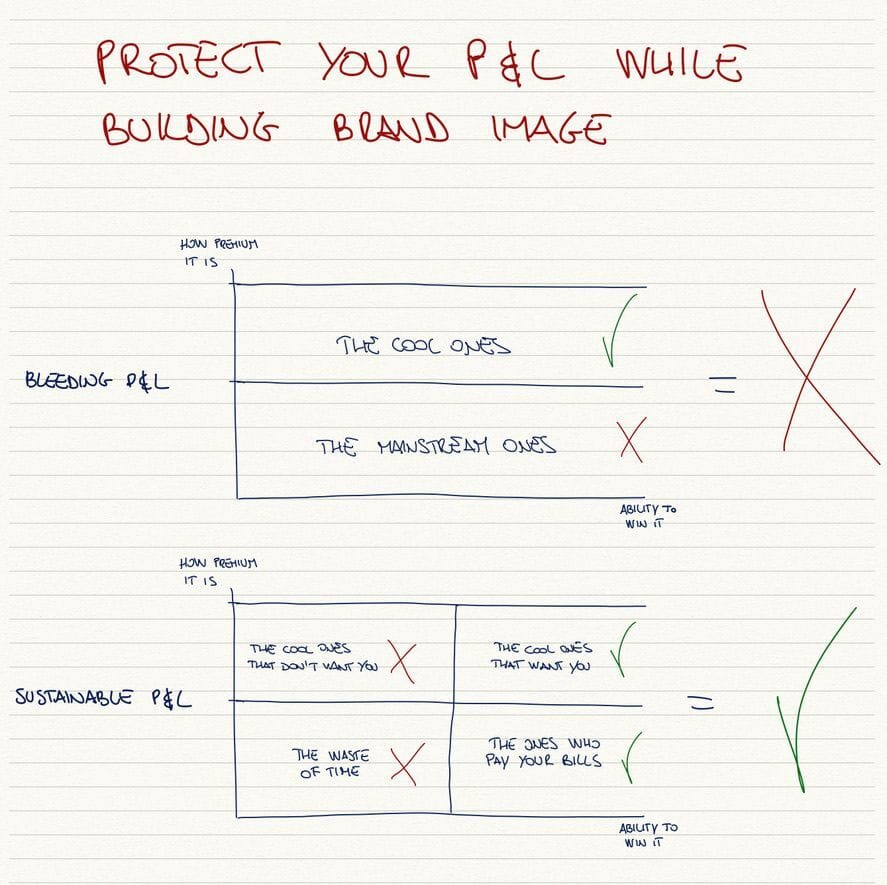The Venue Hunting Framework: A Dead-Simple System to Convert Demand by Grouping Prospects into 4 Types (2 Winners ✅ + 2 Losers ❌)
Why a Regular Venue That Wants You Beats a Cool One That Doesn’t
The MAFFEO DRINKS Guides is a bi-weekly email newsletter. With a systematized approach, it helps drink builders grow their brand from 10 to 10k cases. Each edition solves one clear challenge for subscribers. Some editions are free, and others are paid. Sign up here:
Dear Bottom-up Drinks Builder,
Today's issue follows up on the Mini-Guide “The Hunting Checklist,” in which I discussed the importance of using outlet segmentation to attract new customers. I'll explore the dangers of generalizing outlets and splitting them into "cool ones" and "mainstream ones.”
Unfortunately, most outlet segmentations I've seen in the last twenty years either focus on volume (how much they sell) or brand image (how cool they are). After that, they stop, thinking it is enough. But if you don't go one level deeper, you are uselessly missing out on spending time in the market.
Image-based segmentations are useful for hunting new customers (driving distribution aka converting demand).
Volume-based segmentations are better for farming (developing rate of sale of velocity aka sustaining demand).
Why do I think that? Because I made that mistake in the past. I started my career with a rigorous approach to brand building. Having worked only with premium brands, I used to be very picky.
Being in Marketing, I had tons of clashes with my Sales colleagues. I used to think that the only way to build a premium brand was to focus on the "crème de la crème" of the outlets in the city while my colleagues were keen on expanding distribution rapidly.
I was frustrated. How could we not find a mutual approach to driving marketing and sales efforts? So, I asked to work in Sales. It was the only way to change my perspective on things.
I focused on the top part of the segment, while my sales colleagues focused on the bottom part. We were both wrong (see the top drawing above).
I deep-dived and started looking at things differently. I realized there was a different way to build brands; this one was much more sustainable from a P&L perspective. Why?
It's not about cool or mainstream outlets. There are four types of customers, and only 2 of them matter.
Hunting customers is a counterintuitive bottom-up exercise. By focusing only on the best outlets in town, you will miss great opportunities for more standard outlets that want your brand, don't require much attention, and bring in cash to keep your brand afloat in the first months of your brand-building journey.
I see too many sales teams focusing on the wrong outlets, running around town, and spending time ineffectively betting on the wrong horse.
They forget that their time is money and a day in the trade is very expensive when counting everything from salaries to fuel, from coffees to lunches out.
You must focus on the outlets that are worth the effort, also from a P&L perspective.
Easier said than done, right? How can you find the right ones?
How to understand the right bar for your brand:
Target Occasion: how does your core occasion fit with theirs? If your occasion is a "shot", a fine dining venue won't be right for you, even if it's on all the guides as the best place in town.
Commercial Proposition: what's your purpose, what values does your brand represent? How would you translate your brand positioning into 3 types of outlets? Those are the outlets where your brand would perfectly fit their drinks range.
A simple way to understand which ones to focus on is to create a simple matrix like the one below. Before you start, please read my previous article.
Cluster the outlets in 4 quadrants based on premiumness and on your ability to win there.







